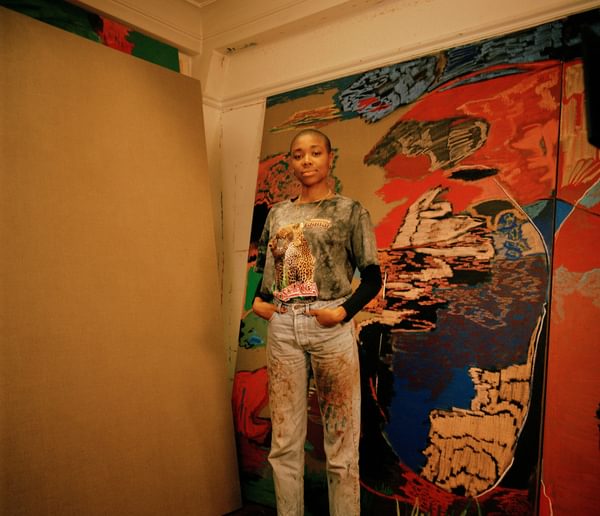
Messiaen Song Cycles II
The second of Rand’s three Messiaen recitals combines love songs for his first wife with the Trois Mélodies which memorialised his mother, and incorporates vibrant projected artwork by Rachel Jones and Cynthia Igbokwe.
- Britten:
- Fileuse, no.3 (Folksong Arrangements: France, 1942) (3')
- Poulenc:
- Tel jour telle nuit (15')
- Debussy:
- Trois mélodies de Verlaine (7')
- Britten:
- La belle est au jardin d'amour (Folksong Arrangements: France, 1942) (2')
- Messiaen:
- Trois mélodies (8’)
- Messiaen:
- Poèmes pour Mi (32’)
Gweneth Ann Rand soprano
Stephen Whitford baritone
Ilan Kurtser piano
Simon Lepper piano
Rachel Jones artwork & animation
Cynthia Igbokwe curator
Ben Smalley animation
Image gallery
A gallery slider

Gweneth Ann Rand
Credit : © Christa Holka
Simon Lepper
Main image: Simon Lepper © Robert Workman
The “Mi” of the title was Olivier Messiaen’s pet name for his first wife Claire Delbos, and this set of songs – with texts by Messiaen himself – speaks of the struggle, revelations and joy of a couple’s journey together. No subject could be closer to his heart, for in 1936 the Messiaens had just married, and the songs evoke an otherworldly joy – as well as a grounded, almost literal, observation of their earthly surroundings, as in Paysage (“Landscape”) – the second song in the cycle:
The lake like a big blue jewel.
The road full of sorrows and pot-holes,
My feet faltering in the dust,
The lake like a big blue jewel.
And there she is, green and blue like the landscape!
Between corn and sun I see her face:
She smiles, one hand shading her eyes.
The lake like a big blue jewel. (trans. Richard Stokes)
The Mélodies were written in memory of his mother and set a poem of hers, Le Sourire (“the smile”), between two of his own. It is another work of charm, transcendence, and passing grief, borne as all his music was by a profound Catholic faith and a deep awareness of the finest nuances of musical colour.
Acclaimed Messiaen interpreters Gweneth Ann Rand and Simon Lepper will be joined by two outstanding Britten Pears Young Artists, who will perform more French songs.
The series of three Messiaen recitals will also feature dazzling artworks by Rachel Jones, the British visual artist acclaimed for her “captivating, jitteringly electric” work. She explains that “you can use colour and shape and form to speak to people in a way that isn't about a spoken language – it’s about emotion and inciting feelings that don’t have to be explained or expressed. It’s responsive, it’s instinctive, and a core part of all of us”.

Explore the Festival
The 75th Aldeburgh Festival of Music and the Arts
07 – 23 June 2024
